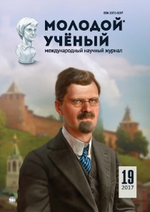It is common to come face some proper nouns which are used in one poem can be used in other poems as well. For instance, the names of the legendary mountains, giants (Qorakhan, Dogiston, Oqtosh, Anqo) and others are utilized repeatedly in different poems.
The researchers D. Abdurakhmanov and H. Bektemirov called them as «returning names» [1, р. 181].
This situation is not only observed in folklore poems, but also in written literature. It is known that the Uzbek have great written and spoken literature. Lots of research has been done in those fields, however we can’t say that they are enough.
Analysing repeated proper nouns in the works of written and spoken literature gives you lots of interesting information. The main reason of this generality is that the spoken literature played the basic role in forming the written literature. Therefore, it is ordinary for them to have some convergence and cognates.
Among the repeated nouns mostly the people’s names can be come across. Most of the investigators mentioned this point. These names are called as antroponyms in scientific books. Antroponyms in written and folklore poems can be divided into 2 groups:
- Realionim («real») –names that really exist in life and the names that are not made up by the writer.
- Unrealionim («unreal») –names that don’t exist in life, they are thought up by the writer.
Realionims which we meet during reading folklore and written works are particularly the names of kings, queens, poets, places, mountains and others that existed in history.
Unrealionims are the names of giants, fairies, legendary places, mountains and others.
For example:
... Jamshid, Faridunman Zol-u Rustamzar,
Yurtni olgan shoh Iskandar qolmadi...
(...Jamshid, Faridun, Zol, Rustamzar,
Even Iskandar who got the country weren’t here...)
Or:
... Chun ko’rib ul Zolni bir Rustame
Bo’ldi havosida asiri g’ame...
(... When Rustam saw Zol
He became a captive of sadness...)
In this examples the specific use of the repeated names in folklore and written literature are observed. At the same time the historical names Rustam, Zol, Faridun, Jam (Jamshid) were used in «Shakhnoma» by Abulkosim Firdavsi. So we can call them as the reapeated names.
The names of people (antroponyms) are the largest part of the repeated proper nouns in the system of onomastics of the proper nouns of both folklore and written literature. A great percentage of these proper nouns is associated with different points of views (Bahovaddin, Balogardon, Sulton Uvays, Dovud, Masiho and others). Most of them are historical names. The passage which was taken from the poem «The birth of Gurugli» (this poem belongs to the system of «Gurugli» poems) proves our opinions:
... Arzimni eshit yo Jabbor,
Bu g’amlardan qutqar mani...
(... Listen to me, Jabbor,
Save me from this sadness...)
Besides them, the names of historical figures and heros of famous works, such as Jamshid, Iskandar, Suhrob, Taxmuras, Faridun are also common as repeated proper nouns in both folklore and written literature, even lyrics.
For instance, in this passage which was taken from Navoiy’s «Layli and Majnun» the proper noun «Iskandar» is used as «Skandar» depending on the poetic situation:
... Ul oyinakim Skandar, etti [2, р. 52],
Po’loddan o’yla paykar etti...
(Skandar made a mirror,
He made it from steel).
In «Bozirgon» poem which belongs to the «Gurugli» system the proper name «Iskandar» is used repeatedly:
... Oysulton aytadur, bebaqo dunyo,
Qani mashhur bo’lgan Iskandar, Doro [3, р. 384]....
(Oysulton said: «The world is unfair,
Where are famous Iskandar and Doro?»)
In lyrics using famous people’s names in history creates certain poetric arts. «In classical literature using names which point out to historical events and people known to everybody is called talmeh « [4, р. 41].
It must be admitted that women’s names are also main part of repeated proper nouns in folklore and written literature. It is mostly observed in lyric parts of folklore and written literature.
As we mentioned before, women’s names are used widely, including, Zulaykho, Sora, Aisha, Fotima. Apart from this, the heroines of the poems, such as Layli, Shirin, Zulaykho can be classified as the commonly used repeated proper nouns.
Toponyms (the names of places) are also repeatedly used in most cases of folklore and written literature. Among the repeated toponyms real and historical places’ names, together with legendary or divine places’ names are confronted. The examples for the former type are Badakhshon, Gurjiston, Mashkhad, Madina, Misr, Rum, Samarkand, Khuroson, Hindiston. The examples for the latter type are Kuhi Khof, Kavsar and other unreal names.
Among the repeated proper nouns, we can confront lots of names associated with the animals’ names (zoonyms) such as the names of birds, horses, snakes and others. For example, Raxsh (a horse), Semurg (a bird), Musna (a snake) are repeatedly used in folklore and written literature.
In conclusion, we should admit that learning and analysing the repeated proper nouns in folklore and written literature make a great contribution to the progress of onomastics of the Uzbek linguistics.
References:
- Abdurahmonov D., Bektemirov H. «The onomastics of Uzbek folklore poems». –Tashkent: Fan, 1967.
- Alisher Navoiy. «Layli and Majnun». The editor: BotirbekHasanov. G’Gulom. ––Tashkent, 1990.
- Gurugli. The editors:: S.Ro‘zimboyev., X. S. Ro‘zimboyev., G. O. Eshjanova. –Khorazm, 2004.
- Hojiahmedov A. Mumtoz badiiyat malohati. — Tashkent: Sharq, 1999.







